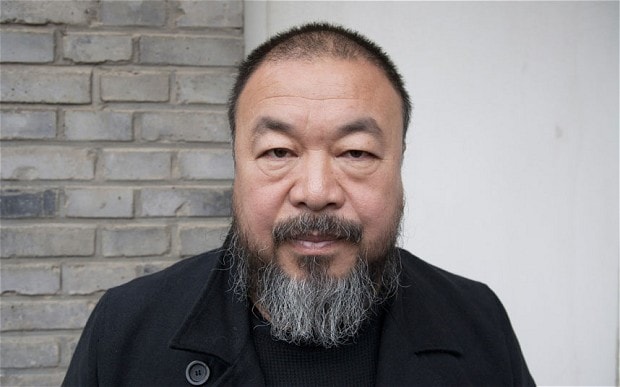
Earlier this year, Chinese artist Dai Jianyong made a terrible mistake: he made a joke. Specifically, he created a series of images entitled Chrysanthemum Face, depicting a number of people, himself included, scrunching their faces. This was not the problem. Nor was it problematic (for the most part) that the flower chrysanthemum is used in China as a euphemism for the rectum, which is hadly dignified. The problem came from a doctored image, distributed by the artist online, of Xi Jinping joining the ranks of the “chrysanthemum face” images. Xi Jianping being the president of China, this was not received terribly well. As a point of fact, it was received with an arrest and a possible sentence of five years in prison, all for “creating a disturbance.” Coming from a nation where artists frequently depict political leaders far worse, for clearer political ends, this action seems absurdly over the top. The issue here is not political reprisals. Whether this was in fact politically motivated or not is highly questionable: Dai’s wife claims “It was just a playful thing he did. I don’t think there was that much political intent behind it.” More to the point, it seems clear that as the image was only one of a group, and the government did not call out his works in total, that this was the exception rather than the rule. Which leaves us with the problem of the court jester. It is not so much the question of whether anyone can criticize authority, but whether anyone can mock it. Every autocrat fears the former; only the most unstable shudder at the latter. For ultimately, what exactly did Dai’s work do? It did not target any policy. It did not insult the party in command, unless you imagine that the party is somehow embodied in its leadership like some manner of secular Christ.
What this indicates is a remarkable divide between what artists and politicians in China view to be the goal of art and artists. Artworks, in the minds of the political elite, exist to promote values, not to be avenues of expression. As Xi Jianping, the offended party in the Dai piece, put it, “Fine art works should be like sunshine from blue sky and breeze in spring that will inspire minds, warm hearts, cultivate taste and clean up undesirable work styles.” This perspective, while pretty enough on paper or a teleprompter, nevertheless has one major flaw: it utterly denies the possibility of antagonistic art. Works can only support, can only be benevolent and gently supportive. Not to say such works do not have value. Indeed they may do a lot to help, in the right situation. But there is a marked difference between saying one style of art is superior, and permitting only one style to exist. No doubt many artists have their own view of what the ideal method of expression is, but we would hardly allow them to ban all others as a result.
Antagonistic art pushes groups, individuals, and anything it is set against to change, specifically by being impossible to ignore. That is its entire purpose—to shock, to offend the senses, to make the audience uncomfortable. When those in power attempt to hamper, or to stamp out, this type of expression, it leads us observers to one conclusion. These powerful people want an art that can be ignored. They do not want critics, or comics, or anyone and anything that does not sit calmly in the background like paintings in some executive’s boardroom. This is a miserable enough philosophy when confined to works that have some political purpose, but when used against humorous works, that did nothing wrong save make a crude joke at the wrong target, directly undermines not only civil society but society in general. It is not that works cannot accuse; they cannot offend either, which creates a maddening culture of oversight, as accusations are objective but offense is subjective. The only person who knows if a work is offensive is the audience, and therefore the author must clear whatever they do with the most powerful members of the audience, as there is little a creator can do to know beforehand whether or not their piece will offend.
Little new information has surfaced regarding Dai, so this story cannot end with a resolution. All we can hope, following the actions of a man that hardly seem worthy of the political response from Chinese authorities, is that all this turns out for the best, and that he suffers no more for a harmless joke.
Source: https://news.artnet.com/art-world/china-artist-arrested-mocking-president-xi-jinping-303088







